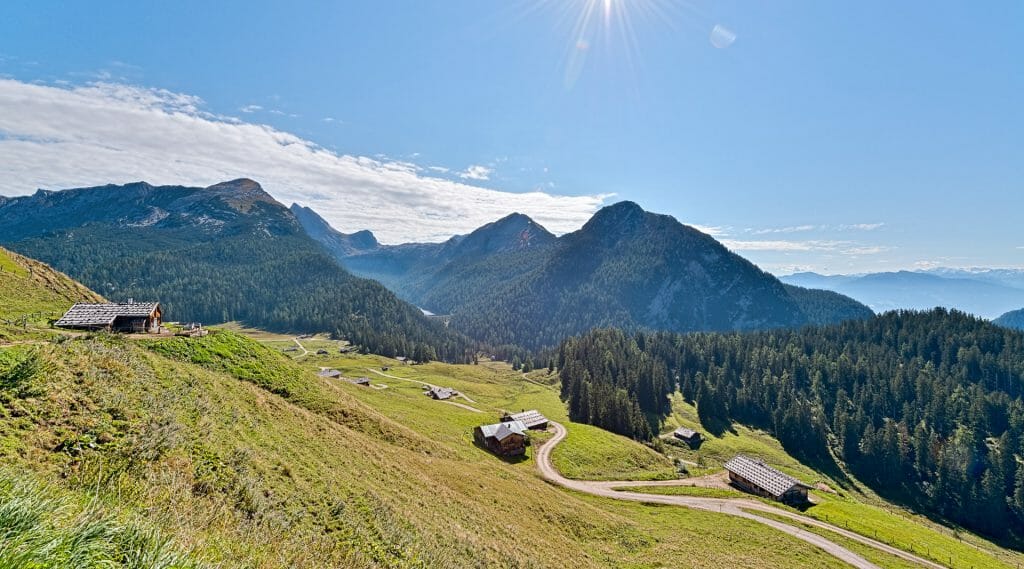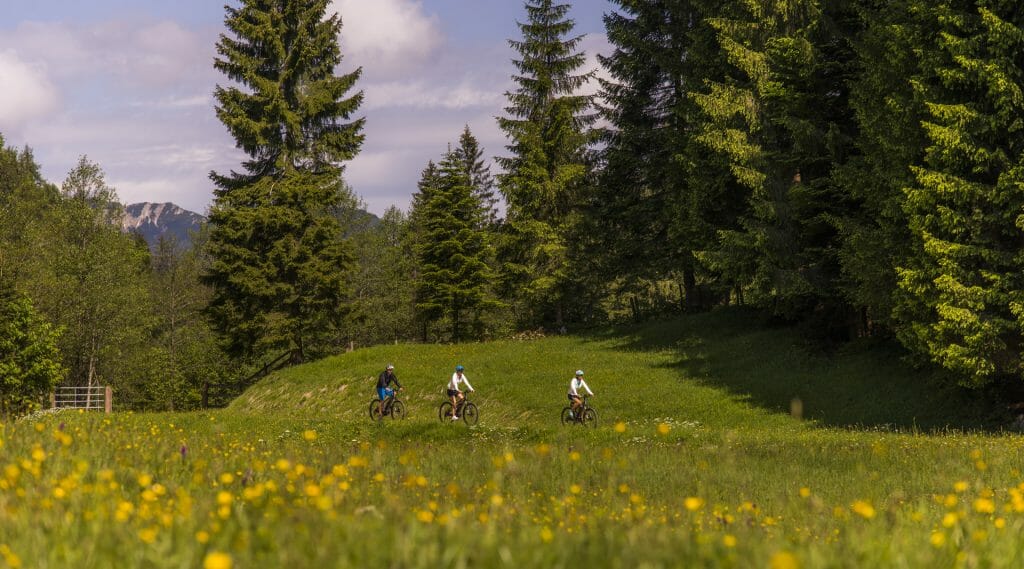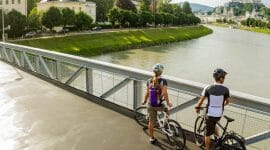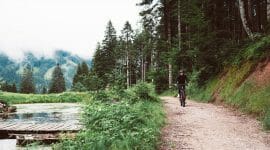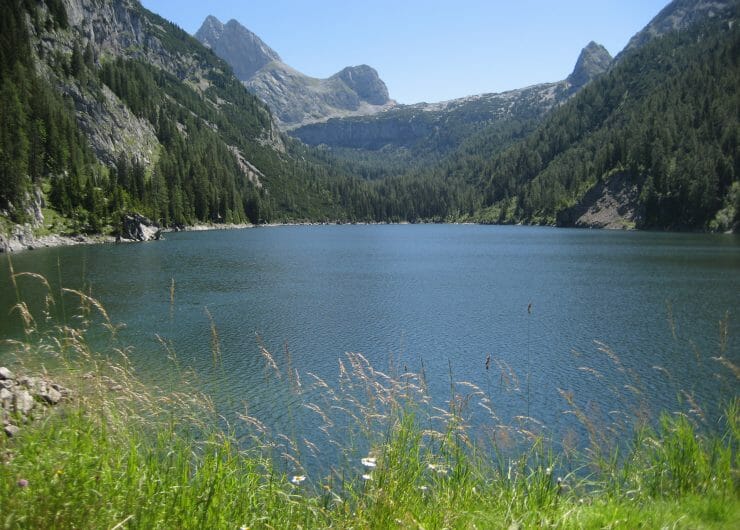
While driving to Weissbach, I often can’t help but notice the massive pressure pipes mounted on the steep rock face. “Where might these pipes lead? What body of water is powering the plant that generates clean energy from hydropower?” To find an answer to these questions, I decided to meet up with Waltraud Lohfeyer. Waltraud is a cycling guide in Salzburg’s Saalachtal valley and, with a smile, she immediately suggests the perfect trip to help me with my search for the power plant’s water sources. “We can hop on electric mountain bikes and go on the tour up to the Diessbachstausee reservoir — that closes the loop and, thanks to fully charged batteries, we can go easy on our calves.”
Detour to the Schaustadel in the Weissbach nature park
In Lofer, I rent my electric mountain bike as Waltraud introduces me to the basics. To warm up, we cycle along the Saalach river on the Tauernradweg trail to Weissbach. The river’s emerald-green water accompanies us throughout the 13-kilometre-long journey to Weissbach. And there we already see the first climbers up on the rock slab above the mountaineer’s village. The climbing station “Zahme Gams” (Tame Chamois) is also already quite busy. We cycle through the centre and make a turn to Hirschlbichler road to make our way to the Hinterthal valley. Thanks to our electric motors, the steep asphalt road is no problem for us at all. “Let’s make a quick detour to the Schaustadl,” says Waltraud, and so we take a break to find out a little more about the local timber industry, traditional wood processing and the traditional craftsmanship required for the shingle roofs and the Pinzgau fences.
The flood and the mountain pasture
After the informative pit stop, we get back on our saddles again. Via forest roads and through the magnificently green meadows of the Kallbrunnalm mountain pasture, we head for the mountain. At the rustic Kashütte hut, we see the mountain pasture’s landlady already serving the first round of guests. With the promise to pay a visit later, we continue on our way. After a short downhill ride, we suddenly stand before the massive lake and the marvellous sight leaves me completely speechless. Like a mirror, the smooth water surface reflects the sides of the mountain. Precipitous rock faces reach all the way down to the water and the green mountain pine fields complement the grey of the rock. Here and there, you see some blossoming Alpine roses, adding dashes of colour to the idyllic scenery. “The Diessbachstausee reservoir is not even that old yet,” reveals Waltraud while adding that “More than half a century ago, this was still a pasture with grazing cows. The Diessbachalm mountain pasture was already mentioned in documents in 1386 and there was even a mountain hut here. In 1961, the basin became the Diessbachstausee reservoir, which led to the flooding of the entire pasture along with the mountain hut. The barrage is around a kilometre long, 36 metres high and can hold back almost 5 million cubic metres of water.”

© Naturpark Weissbach – Reflection in the water
From the mountain lake to hydropower
Impressed, I look at the unfathomably deep water. To me, these still waters seem more like an idyllic mountain lake than like an artificial reservoir created by people. I look around for the distinct pipes that I had seen from the car. But Waltraud reveals, “From the lake, the water flows via a 1,500-metre-long tunnel through the rock until it hits a wall, where it then falls into the 700-metre-long pressure pipe — one of the steepest in Europe. That is how the water makes its way to the Diessbach power plant and then continues into the Saalach river. As we cool our feet in the lake’s icy water, I imagine the steep fall of the mountain lake’s water that is so naturally embedded into its surroundings — past the turbines of the power plant and into the Saalach river. The panorama is just overwhelming. We’re overlooked by the Seehorn mountain and the back of the Hundstod mountain and, far in the distance, we can see the Ingolstädter Haus mountain cabin. But after some time, Waltraud says laughingly, “Well, my batteries are already recharged, how about we go pay that visit to Kashütte?”
Detour to the Vorderkaserklamm natural swimming area
Just thinking about cheese sandwiches and the elderberry juice, I’m ready to go in no time. So, we begin our journey back and finally take refuge on the terrace of Helga’s hut. We enjoy the heartfelt service and the cosy atmosphere at the mountain pasture. In the meantime, the sun has reached its peak and as we make our way back into the valley via the same route and I can really feel the sun’s heat. “How about another little detour to the Vorderkaserklamm natural swimming area? It’s on our route and it would make a great conclusion to such a watery excursion,” says Waltraud. I enthusiastically agree, because a jump into the clear, cold water of the Vorderkaserklamm ravine is just what I need right now. So, we cycle past the Lamprechtshöhle cave along the Saalach river to make our way to the natural swimming area and finally cool off a little.



